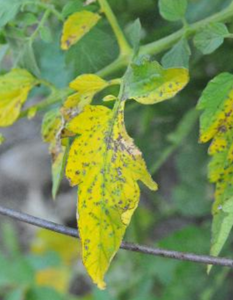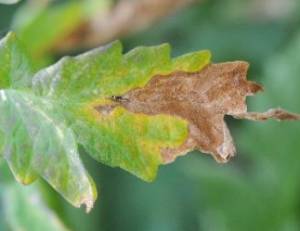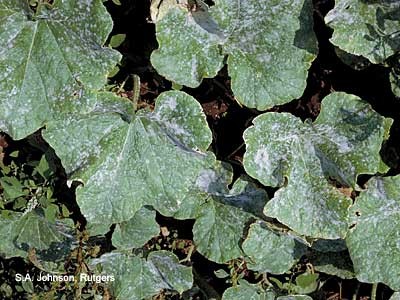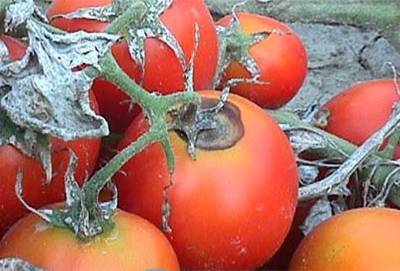Common Diseases in the Vegetable Garden
Weather conditions over the last couple of years have not favored having many disease issues in the garden. In general, diseases need three things, called the disease triangle, to infect plants. The three requirements necessary are a pathogen, a susceptible host, and favorable environmental conditions. With the increased humidity and moisture this spring across the country, we need to be on the lookout for fungal diseases in our flowerbeds and gardens. Let’s look at some of the most common fungal diseases you might encounter.
 Septoria Leaf Spot- This fungal disease is common on tomato plants during wet weather. The disease starts on the lower leaves as small, circular gray lesions with dark borders. The lesions enlarge and cause leaves to turn yellow and eventually die. The disease slowly moves up the plant and can defoliate it. To reduce the chances of this disease, adequate spacing between plants and increased air circulation are needed to dry the foliage off as quickly as possible. Remove the lower leaves of the tomato plant as it grows, so the fungal spores can’t be splashed onto the lower leaves. If you see signs of the disease, remove the infected leaves (at the end of the season, remove the entire plant and throw it away) and apply a synthetic or copper fungicide according to the directions to slow the spread of the disease.
Septoria Leaf Spot- This fungal disease is common on tomato plants during wet weather. The disease starts on the lower leaves as small, circular gray lesions with dark borders. The lesions enlarge and cause leaves to turn yellow and eventually die. The disease slowly moves up the plant and can defoliate it. To reduce the chances of this disease, adequate spacing between plants and increased air circulation are needed to dry the foliage off as quickly as possible. Remove the lower leaves of the tomato plant as it grows, so the fungal spores can’t be splashed onto the lower leaves. If you see signs of the disease, remove the infected leaves (at the end of the season, remove the entire plant and throw it away) and apply a synthetic or copper fungicide according to the directions to slow the spread of the disease.
Early Blight- This fungal disease is one of the most common on tomatoes and can completely defoliate a plant. The infection starts as small brown spots on older leaves that quickly enlarge and develop a yellow halo. The lesions also develop a “bull's-eye” pattern of concentric rings that can be seen with a hand lens. Early blight can also infect the stems and fruits of tomatoes. This disease overwinters in the soil and on leaf debris in the garden. Early Blight can spread during wet or dry weather, but is favored by rainfall or heavy dew, and the spores can be spread from one garden to the next via wind. Treatment for Early blight is the same as that for Septoria Leaf Spot.
defoliate a plant. The infection starts as small brown spots on older leaves that quickly enlarge and develop a yellow halo. The lesions also develop a “bull's-eye” pattern of concentric rings that can be seen with a hand lens. Early blight can also infect the stems and fruits of tomatoes. This disease overwinters in the soil and on leaf debris in the garden. Early Blight can spread during wet or dry weather, but is favored by rainfall or heavy dew, and the spores can be spread from one garden to the next via wind. Treatment for Early blight is the same as that for Septoria Leaf Spot.
 Powdery Mildew- This fungal disease is common on cucumbers, squash, and several flowers, including peonies and lilac bushes. Powdery mildew grows as a white, powdery coating over the surfaces of the leaves. This disease is favored by warm weather and can be destructive in dry and hot seasons. It can grow rapidly, with high humidity, but unlike many other plant pathogens, wet foliage does not encourage it. The best management for this disease is to select resistant cultivars whenever possible and remove all plant debris at the end of the growing season. There are horticultural oils labeled for powdery mildew on cucurbits.
Powdery Mildew- This fungal disease is common on cucumbers, squash, and several flowers, including peonies and lilac bushes. Powdery mildew grows as a white, powdery coating over the surfaces of the leaves. This disease is favored by warm weather and can be destructive in dry and hot seasons. It can grow rapidly, with high humidity, but unlike many other plant pathogens, wet foliage does not encourage it. The best management for this disease is to select resistant cultivars whenever possible and remove all plant debris at the end of the growing season. There are horticultural oils labeled for powdery mildew on cucurbits.
Anthracnose- This disease is a frequent problem in the latter part of the growing season on ripening tomato fruit and reduces the quality and yield of tomatoes. Symptoms first appear as small circular, slightly sunken lesions on the surface of ripening fruits. These spots quickly enlarge, become bruiselike depressions, and develop a water-soaked appearance directly beneath the fruit's skin. Black concentric rings will then form in the center of the lesions. Several fungal species cause anthracnose and can survive on infected plant debris and soil. During rainy weather, the fungal spores are splashed onto the fruit. Control for this disease is similar to that of Septoria Leaf spot, including mulching around the plants, avoiding overhead watering, and increasing air movement around plants. You can also spray with fungicide products that contain the active ingredients Bacillus subtilis, chlorothalonil, copper, and maneb.
ripening tomato fruit and reduces the quality and yield of tomatoes. Symptoms first appear as small circular, slightly sunken lesions on the surface of ripening fruits. These spots quickly enlarge, become bruiselike depressions, and develop a water-soaked appearance directly beneath the fruit's skin. Black concentric rings will then form in the center of the lesions. Several fungal species cause anthracnose and can survive on infected plant debris and soil. During rainy weather, the fungal spores are splashed onto the fruit. Control for this disease is similar to that of Septoria Leaf spot, including mulching around the plants, avoiding overhead watering, and increasing air movement around plants. You can also spray with fungicide products that contain the active ingredients Bacillus subtilis, chlorothalonil, copper, and maneb.

Have questions? Contact our office where our Horticulture Extension Agent will assist you with questions.
Phone: (316) 321-9660
Email: callae@ksu.edu